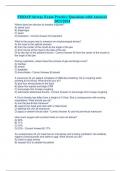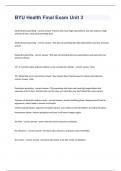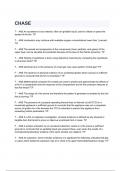Exam (elaborations)
Test Bank For Radiologic Science for Technologists 12th Edition by Bushong, Complete Guide Chapter 1-40.
- Course
- Institution
- Book
Test bank for Radiologic Science for Technologists Physics, Biology, and Protection 12th Edition Chapter 1-40 Author: Stewart Bushong TABLE OF CONTENTS Chapter 1. Essential Concepts of Radiologic Science Chapter 2. Basic Physics Primer Chapter 3. The Structure of Matter Chapter 4. Electromagnetic E...
[Show more]







